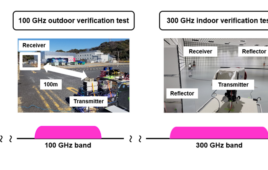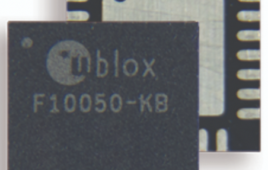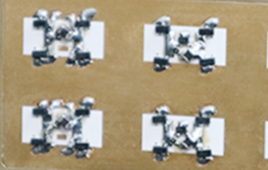Researchers at the U.S. Naval Research Laboratory flew a fleet of 30 miniature autonomous blimps in unison to test the swarming behavior of autonomous systems. The blimps responded to each other while in flight and responded to changing conditions.
Don Sofge, lead for the distributed autonomous systems group at NRL, and his team are working to further research for autonomous super swarms. Their goal is to fly more than 100 controlled miniature blimps this year.
Georgia Tech researchers created the miniature blimp platform and continue to provide design upgrades in collaboration with Sofge’s group. This year, they are upgrading the motors, adding sensors and making design tweaks.
“The process is a constant give-and-take with design and scale,” Sofge said. “It’s better to start with a simple design. You start with something that works and then make incremental changes. There are challenges with design and there are challenges with scaling. So we are redesigning and then scaling up to produce the 100 blimps. We are taking it one step at a time.”
The Science of Swarming
One of the goals for Sofge’s research is to understand the potential uses for swarms of autonomous systems—both defensive and offensive. Some desired emergent behaviors include protecting an asset, providing area coverage, conducting reconnaissance missions, or simply moving in formation from one location to another.
He likens individual autonomous agents to ants in a colony. Ants perform actions often equated with the functions of a society, but they do not have a central control. The possibility of replicating individual behaviors in autonomous systems is of great interest to researchers.
“We are using these as platforms to demonstrate swarm behaviors,” Sofge said. “Behaviors are programmed into each agent individually. The idea is that each agent is making its own decisions, sensing the world around it so that the action of the group results in some desirable emergent behavior.”
“In order to get the swarm to do something useful, you have to think about how to program the individual,” he said. “What behaviors or algorithms are running on the individual agent? In nature, most colony or swarm systems have no centralized control. Each individual is basically interacting with its environment, but collectively they are able to do very interesting and useful things.”
Sofge and his team plan to design such behaviors to scale up emergent swarming behavior to involve as many as 10,000 autonomous systems.
“If you are working with a traditional centralized control architecture you have to deal with the challenges of communicating with 10,000 agents individually,” Sofge said. “You can’t assume everyone knows where everyone else is because they are only interacting locally based on what they sense and the decisions they are making and the actions they are taking locally.”
The NRL research team is also working to establish a seamless networking architecture. They are leveraging existing network architectures and protocols for large numbers of objects working together. Each object in a swarm is dynamic and its location is never fixed. The object may move in and out of the network, which makes overlaying a network architecture extremely difficult.
Autonomous objects in a swarm must deal with a challenge common in military environments: communication. The U.S. Department of Defense operates all over the world, from the chilling Arctic to hot tropical forests. Staying in communication with an agent despite inhospitable environments and potential enemy jamming is something Sofge and his team must keep in mind as they develop swarming technology.
The History of Autonomy Imitating Life
The study of swarming behavior at NRL began in the 1990s and was founded on the concept of physicomimetics, a physics-based approach that models the behavior of charged particles interacting with one another. Later, swarming approaches developed at NRL were biology-inspired by animal swarms, such as bees, ants and birds in nature.
“In physicomimetics, you define objects as being particle types and create force laws to describe action between those particle types,” Sofge said. “By choosing your particle type and force laws appropriately you could get swarms of agents to do interesting things, like move in formation and flow around objects.”
Using bio-inspired concepts such as quorum sensing, an ability that bacteria use to communicate and coordinate via signaling molecules, Sofge’s team demonstrated complex group decision-making using simple agent-based behaviors.
NRL’s researchers have advanced physicomimetics and nature-inspired techniques for teams of autonomous systems and plan to continue to develop new algorithms for swarming behaviors. The most recent findings have advanced swarm technology and show potential for making advances in human-machine interfaces.




